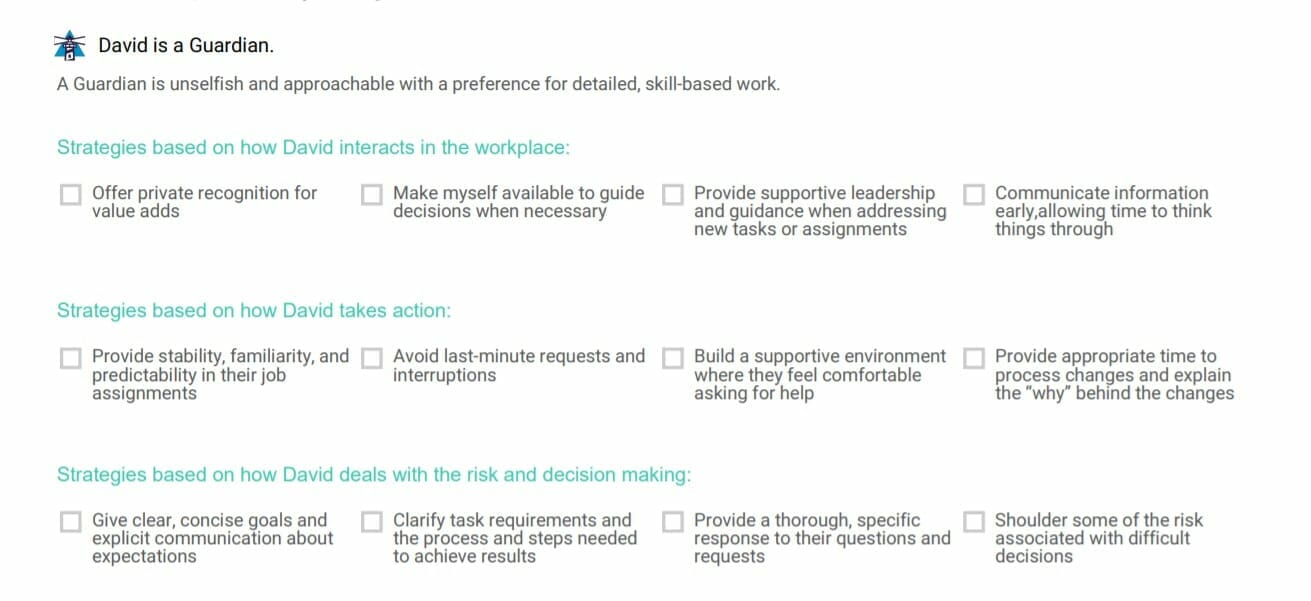“You’re only as strong as the weakest member of your team.” It’s a phrase often thrown out during conferences and motivational speeches. Yet while it applies to any employee or individual contributor, it holds especially true for people in leadership positions.
As a leader, part of your job is to understand team dynamics. That includes not just how your team members interact, but also how you manage and communicate with your team. Oftentimes, that awareness will require you to tailor your leadership style to fit the people you’re working with.
Understanding the dynamics of a complex team
I manage the User Operations team at The Predictive Index®. In reality, User Ops consists of three teams: service, IT, and technical solutions. The teams work together, but each is ultimately responsible for providing its own unique expertise.
Service supports our clients and PI Certified Partners. An externally-facing function, those on the service team work hours that reflect the needs of our users. That means rolling out of bed to answer calls at 7 a.m. on the East Coast—or troubleshooting issues for clients as late as 7 p.m. As you can imagine, the role requires a high degree of flexibility and extraversion.
IT, by contrast, plays a more internal role. These individuals provide technical support to employees within the company, ensuring that daily operations run smoothly. Unlike the service team, IT may not need to be particularly outgoing—but it sure puts a premium on process and precision.
Meanwhile, the technical solutions team is considered the highest echelon of technical support. These employees have a variety of responsibilities. They’re also relied upon to communicate their expertise across the company.

The key to leading a behaviorally diverse team
With such a diversity of responsibilities and behaviors, it can be challenging to lead my team. What helps, though, is self-awareness—and a deep understanding of the people I work with.
In PI lingo, I’m a Specialist—someone who enjoys learning every detail and mastering my domain. To me, the world of customer service—and its various processes—comes rather naturally. When it comes to IT and technical solutions, however, I’m admittedly less knowledgeable—and more hands-off.
This can be difficult—especially since I’m behaviorally wired to want more detail, not less. As a manager, though, part of my responsibility is knowing when to embrace my behavioral tendencies—and when to tailor them to fit my team’s needs.
In the case of my tech employees, that means taking interest in the finer details—but not to the point of micromanaging. I recognize I’m never going to be an expert in that field. At the same time, it’s important to have some level of knowledge so I can identify roadblocks and propose solutions.
For leaders in similar positions, make a conscious effort to understand yourself—and those you manage. If you have an outgoing team member, try communicating face-to-face. For an employee who’s more reserved, it may be better to send an email and let them process the information.
In doing so, you’ll establish stronger relationships—and healthier lines of communication.
Join 10,000 companies solving the most complex people problems with PI.
Hire the right people, inspire their best work, design dream teams, and sustain engagement for the long haul.
Using behavioral awareness to navigate a sea of change
Another critical reason to tailor your leadership? To brace for change.
At PI, we’re always moving forward—one day never feels like the next. While many find this exhilarating, others on my team need time to adapt to change. Behaviorally, the latter group prefers consistency in their work environment. So when change comes, it may be met with a degree of discomfort.
In order to cater to both sides, it’s important to relate to all types of team members. It could mean taking a half-hour to check in with a team member, explain the importance of an upcoming initiative, and help them come up with a plan to adapt. Or, it could mean soliciting feedback from more vocal team members to identify areas of improvement.
At the end of the day, it’s about putting yourself in your employees’ shoes. By having that awareness, I’m able to make the best decisions for our customers—while recognizing and encouraging those working to implement those decisions.
Struggling to tailor your leadership to changing team dynamics? Try PI.
Regardless of whether you’re a new or seasoned leader, there are always ways to improve how you communicate with and manage your team.
The PI Management Strategy Guide is a powerful tool that can help you do just that. Using behavioral patterns, you can generate a personalized report that identifies effective ways to interact with, encourage, and delegate tasks to each of your employees.

Even if you’ve just hired a new employee and have yet to understand their behavioral tendencies, the Management Strategy Guide can help accelerate that learning process—and establish trust. Better yet, it provides a touchpoint for future discussion—-and establishes finer, more frequent feedback loops.
PI helps you understand what motivates and drives your employees—so you can make sure you’re doing things right from the get-go.
Join 10,000 companies solving the most complex people problems with PI.
Hire the right people, inspire their best work, design dream teams, and sustain engagement for the long haul.








